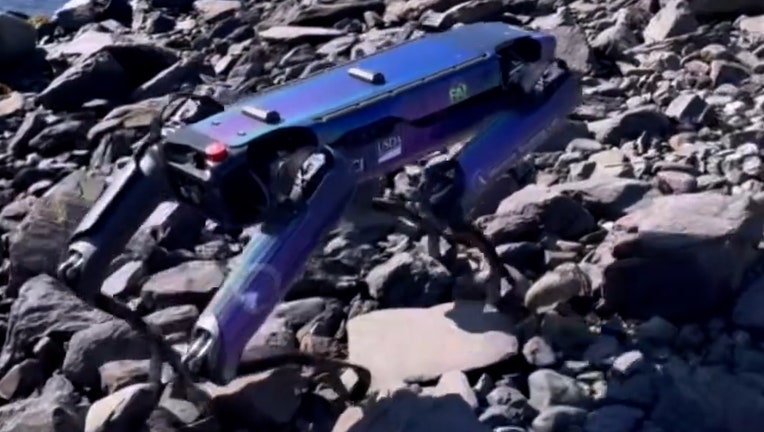This new robot will dress like a fox and coyote to scare off birds in Alaska

Aurora the robot (Alaska Department of Transportation and Public Facilities)
FAIRBANKS, Alaska - A new robot named Aurora has been hired to help ward off wildlife and migratory birds at an Alaska airport.
According to the state’s Department of Transportation and Public Facilities, Aurora is built for a variety of tasks, including climbing rocks and stairs while dancing and flashing green lights. Those moves are meant to imitate predators like foxes and coyotes to keep birds and other wildlife from hanging out near the Fairbanks airport and runways.
Aurora is headless and about the size of a labrador retriever. She was designed by longtime Alaska DOT employee Andrea Deppner and inspired by the beautiful dancing ribbons of light in the sky known as the aurora borealis, or Alaska’s northern lights.
"The sole purpose of this is to act as a predator and allow for us to invoke that response in wildlife without having to use other means," Ryan Marlow, a program manager for Alaska DOT, told legislators last week.
READ MORE: United Airlines CEO addresses string of incidents, tells passengers carrier is safe
Other ideas for wildlife mitigation included using drones to spray repellents like grape juice, but those plans were rejected in favor of robot Aurora.

Robot Aurora climbing stairs (Alaska Department of Transportation and Public Facilities)
Last year, there were 92 animal strikes near airports across Alaska, including 10 in Fairbanks, according to an Federal Aviation Administration database.
Most strikes resulted in no damage to the aircraft, but Marlow said the encounters can be expensive and dangerous in the rare instance when a bird is sucked into an engine, potentially causing a crash.
An AWACS jet crashed in 1995 when it hit a flock of geese, killing 24 people at Elmendorf Air Force Base in Anchorage.
The robot from Boston Dynamics cost about $70,000 and was paid for with a federal grant.
The Associated Press contributed to this report.

